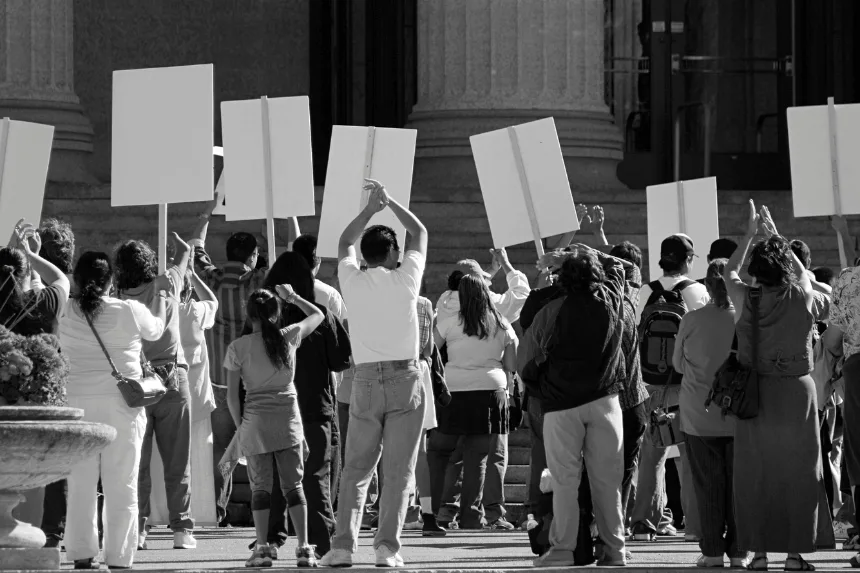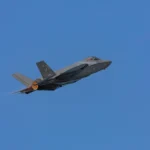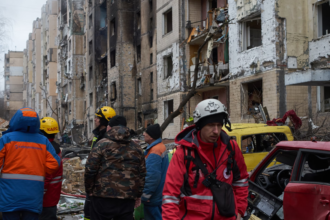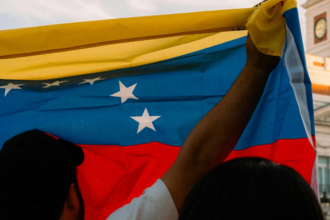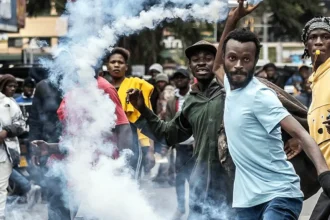The movement that started in November with cries for justice after the Novi Sad train catastrophe has grown into a bigger cry for political change. The protests started right after a concrete roof fell at the newly reconstructed Novi Sad railway station, killing 16 people. The public outrage over this avoidable tragedy swiftly turned into a nationwide anti-corruption campaign against President Vucic’s government.
The protests, which started with students, reached their pinnacle with a huge rally in Belgrade when 140,000 people called for the resignation of government officials. The students, on the other hand, said they would pull back and let other groups take up the demonstration when the government didn’t respond by the deadline. This was a change in strategy, from big rallies to civil disobedience, which included setting up roadblocks in key Serbian cities like Belgrade, Novi Sad, and Nis.
Local people have helped plan these blockades through “citizens’ assemblies.” These barriers, made with everyday things like chairs and trash cans, have made life difficult and started arguments over how well this new type of protest works.
What does the police crackdown mean for people?
The administration has sent more police to deal with the roadblocks that are popping up all throughout Serbia. There have been a lot of arrests in the last several days, and some are complaining that police officers are using too much force. At Belgrade University, things got tense when police went inside the Law Faculty and fought with students, hurting some of them, including breaking a collarbone. High school pupils have also been targeted, which made their parents angry and demand that their kids be let go.
Many people have strongly criticised these heavy-handed methods. The police operations have been criticised by the Journalists’ Association, the opposition Centre Party, and even the Serbian Orthodox Church. The European Union also spoke out against the assault, calling it “acts of hatred and violence.” The outcry is making the government rethink how it is dealing with the protests. Here is the link to our article on France Protests Barnier Appointment
Will roadblocks work better than past rallies?
The change from demonstrations to barricades in Serbia makes us wonder how effective the protest movement will be in the future. The rallies have brought together hundreds of thousands of people, yet many people doubt that blocking highways would lead to real change. The movement has only had limited success in making real political changes, even though there have been months of protests, including sit-ins at colleges and several general strikes.
The political situation in Serbia is a big reason why this is hard. Many people don’t like Vucic’s authoritarian approach, but his party is still in charge, and surveys show that the SNS still has a lot of popularity. Serbia’s politics are more complicated because there isn’t a strong opposition leader who could effectively confront Vucic at the polls. It doesn’t look good for forcing a change of government without a strong, united opposition.
How Did the Disaster in Novi Sad Start the Protest Movement?
The protests started because of the terrible things that happened at the Novi Sad railway station, where a concrete roof fell and killed 16 people. Many people in Serbia regard the collapse of a newly restored building as an indication of the deep-seated corruption and incompetence that they think President Vucic’s government is responsible for. At first, protesters called for those responsible for the accident to be held accountable. They wanted to know how safe infrastructure projects were, and for those guilty to be prosecuted.
The phrases “We are all under the canopy” and “Corruption kills” became rallying cries for the movement. University students, who felt that something was wrong, rapidly took charge and demanded explanations and the resignation of important leaders, including Prime Minister Milos Vucevic. Eventually, the protests forced Vucevic to step down, but many people thought that not much had changed when he was replaced by another Vucic supporter, Djuro Macut. Here is the link to our article on Venezuela Election Protests
What are the long-term chances for the protest movement?
The protest movement still gets a lot of people in Serbia excited. Opposition leaders, such as Srdjan Milivojevic of the Democratic Party, have compared the protests to those staged by students in the early 2000s that helped bring down Slobodan Milosevic’s bad government. Milosevic lost power amid huge protests against government corruption and election fraud, which led to his resignation.
But the situation in Serbia right now is very different. President Vucic’s government is getting a lot of criticism, yet it is still rather safe in its job. The SNS is still in charge of Serbian politics, and Vucic’s power is mostly unquestioned. Even while some are comparing the present movement to the protests of the 2000s, there is no clear way for it to bring about real political change.
President Vucic said that “Serbia won” after the student-led rally in Belgrade. He said that the protests were an attempt to “overthrow the state.” The demonstrators think this isn’t over yet because of the persistent blockages and the larger civil disobedience movement. They want new elections, but Vucic says there won’t be any until December of next year.
What will happen to the protests in Serbia in the future?
The change from demonstrations to barricades in the Serbia protests marks a new stage for the movement. The methods have evolved, but the underlying demand is still the same: new elections and an end to the deep-seated corruption that has been going on under President Vucic. It is yet unclear if these new strategies will work better than the old rallies. The demonstrators have a lot of trouble because there isn’t a clear leader of the opposition, and Vucic is still popular. But the movement’s strength and wide support show that the call for change in the Serbian protests will continue.


